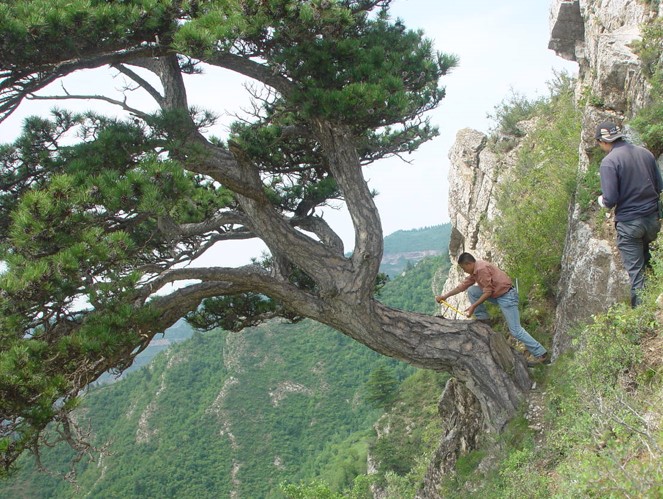Tree rings and the Asian Summer Monsoon
Cliffsidetree_LiuYU.jpg

A multi-author paper in Geophysical Research Letters led by Dr. Yu Liu of the Institute of Earth Environment (Chinese Academy of Sciences) in Xian, China, and including LTRR faculty member Steve Leavitt, presents evidence of declining Asian summer monsoon precipitation at its northern edge in the Loess Plateau of China. The study uses the collective power of over 300 trees from 10 sites over a 6° x 6° area in the region to capture year-to-year variability of growth, which is primarily related to precipitation at these semi-arid locations. The precipitation reconstruction extends 448 years and matches historical drought and locust events from written historical records. Most notably, the decline of precipitation in the last 80 years is unmatched in over four centuries, and based on modeling it does not seem related to natural environmental drivers such as climate modes (e.g. Pacific Decadal Oscillation or North Atlantic Oscillation), solar variability, and volcanic eruptions. Nor does it appear related to human-related input of greenhouse gases to the atmosphere. However, the input of sulfur from pollution largely associated with fossil-fuel combustion may provide the “smoking gun” to this observation, as sulfate particles in the atmosphere are known to be particularly reflective to sunlight. Cooling from the sulfur pollution might reduce land-sea temperature contrast and thereby reduce monsoon strength.
Dr. Liu has long-standing affiliation with the Tree-Ring Lab at the University of Arizona, going back to the early 1990s when former Director Malcolm Hughes and Leavitt first visited Xian and collected samples with then-grad student Liu. Liu subsequently visited LTRR several time beginning in the early 1990s and developed research collaborations with Hughes, Leavitt and Prof. Greg Garfin (LTRR grad student in the 1990s and now in UA's SNRE). Dr. Liu is currently the Director of the Institute of Earth Environment and the State Key Laboratory of Loess and Quaternary Geology in Xian.

